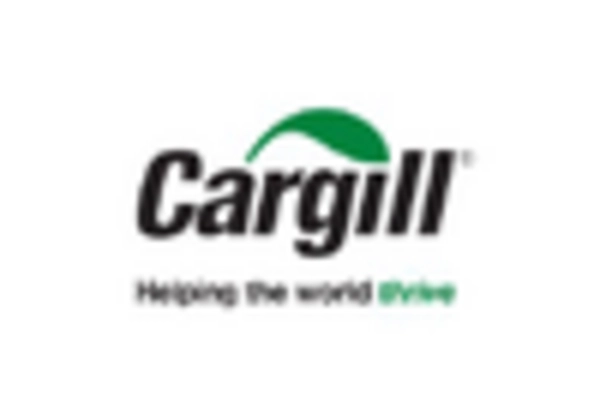Culinary Trends
Culinary trends emphasizing natural and organic ingredients are playing a pivotal role in shaping the Non-GMO Food Product Market. Chefs and food enthusiasts are increasingly advocating for the use of non-GMO ingredients in their recipes, which resonates with consumers seeking authentic and wholesome food experiences. This trend is reflected in the rising popularity of farm-to-table dining and artisanal food products, which often prioritize non-GMO sourcing. Market data shows that restaurants and food service providers incorporating non-GMO options are experiencing higher customer satisfaction and loyalty. As culinary trends continue to evolve, the demand for non-GMO products is expected to grow, further solidifying their place in the Non-GMO Food Product Market. The intersection of gastronomy and consumer preferences is likely to drive innovation and product development in this sector.
Regulatory Support
Regulatory frameworks and policies supporting non-GMO labeling and production are emerging as a significant driver for the Non-GMO Food Product Market. Governments in various regions are implementing stricter regulations regarding the labeling of genetically modified foods, which enhances consumer trust and transparency. This regulatory environment encourages manufacturers to invest in non-GMO products, as compliance with these standards can lead to increased market share. Recent data indicates that regions with stringent non-GMO regulations have seen a marked increase in the availability of non-GMO products, contributing to a more competitive marketplace. As regulatory support continues to evolve, it is likely to bolster the growth of the Non-GMO Food Product Market, providing consumers with more choices and fostering a culture of informed decision-making.
Ethical Consumerism
The rise of ethical consumerism is significantly influencing the Non-GMO Food Product Market. Consumers are increasingly making purchasing decisions based on ethical considerations, including animal welfare, environmental impact, and social responsibility. This shift in consumer behavior is driving demand for non-GMO products, as they are often perceived as more aligned with ethical values. Market data indicates that a substantial portion of consumers is willing to pay a premium for non-GMO products, reflecting their commitment to supporting sustainable and ethical practices. As awareness of ethical issues continues to grow, companies are likely to respond by enhancing their non-GMO offerings and promoting their commitment to ethical sourcing. This trend is expected to further propel the Non-GMO Food Product Market, as consumers seek products that resonate with their values.
Health Consciousness
The increasing awareness of health and wellness among consumers appears to be a primary driver for the Non-GMO Food Product Market. As individuals become more informed about the potential health risks associated with genetically modified organisms, they are gravitating towards non-GMO options. This trend is reflected in market data, which indicates that the demand for organic and non-GMO products has surged, with sales reaching approximately 25 billion dollars in recent years. Consumers are actively seeking products that align with their health values, leading to a notable shift in purchasing behavior. Retailers are responding by expanding their non-GMO offerings, thereby enhancing the visibility and availability of these products. This heightened focus on health consciousness is likely to continue influencing the Non-GMO Food Product Market in the foreseeable future.
Environmental Concerns
Environmental sustainability is increasingly becoming a focal point for consumers, which significantly impacts the Non-GMO Food Product Market. Many individuals express concerns regarding the ecological implications of genetically modified crops, including biodiversity loss and pesticide use. This awareness has led to a growing preference for non-GMO products, as consumers perceive them as more environmentally friendly. Market data suggests that the non-GMO segment is experiencing robust growth, with a compound annual growth rate projected at around 10% over the next five years. As consumers prioritize sustainable practices, companies are adapting their product lines to meet this demand, further driving the expansion of the Non-GMO Food Product Market. The intersection of consumer values and environmental stewardship is likely to shape future trends in this sector.

















